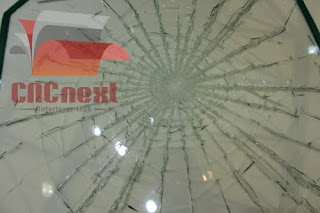Vacuuming And Heating Instruction of Polyvinyl Butyral PVB Interlayer Film
www.helloglass.com
All rights reserved by CNC-INTERLAYER TECH:
【Product 1】CNC-Force EVA INERLAYER FOR ARCHITECTURAL LAMINATED GLASS
eva@evafilms.com
【Product 2】CNC-SmartSMART FILM FOR PRIVACY SWITCHABLE GLASS
smartfilm@smartestglass.com
【Product 3】CNC-Shield PVB INTERLAYER FOR AUTOMOTIVE WINDSHIELD GLASS
pvb@pvbfilm.net
Web: www.CNCglass.com www.CNCnext.com www.HelloGlass.com
Mail: cnc@cncnext.com
benext77@gmail.com/
benext77@hotmail.com
Preheating and Exhaust of PVB Film:
After the glass and Polyvinyl Butyral PVB interlayer film is combined,
there are some air between the PVB interlayer film and the glasses.
PVB Interlayer Film can dissolve some of air by itself, but not very
much of it. To extrude the air out, here are the methods:
+Hot roller extrude exhausting air
Hot roller exhausting air has many ways: single thermostat chamber
with double rollers or double thermostat chambers with double rollers.
Single thermostat chamber with double rollers: usually for laminating
flat glass with Polyvinyl Butyral PVB interlayer film. When
pre-laminated glass goes through the frist roller, most of air will be
squeezed out. Then the pre-laminated glass goes into the thermostat
chamber to heat, then, go through second roller to extrude exhaust
after heating. At this most, air isolation and edge seal is finished
at the same time, the pre-laminated glass looks prey translucent while
the narrow area around edge shows transparent.
The temperature control is very important, in order to expulsion of
air and seal sides of pre-laminated glass successfully, temperature
should be kept about 70-80 degree after going through the second
roller.
If you doesn't find the prey translucent area after the second
rolling, which means the glass temperature is too low. On the
contrary, if the temperature is too high, edges of the pre-laminated
glass will be sealed too early, which will stop squeeze air out, then
bubbles will appears in the laminated glass.
Vacuuming exhausting air
This method is specially for laminating uneven glass with PVB
interlayer film, such as automobile windshield glass, bending glass.
Put the pre-laminated glass into a vacuum bag or put vacuum rubber
ring to seal the glass, then start the vacuum pump.
The procedure is divided into two steps: cold vacuuming period and hot
vacuuming period. In the cold vacuuming period, the temperature is
about 25 degrees and holding time about 15 minutes, and the negative
pressure should be at least 0.8 bar. In the hot vacuuming period,
temperature is about 80-110degrees, and holding time about 30 minutes.
And the most suitable temperature and time of hot vacuuming exhausting
air depends on the machine and producing speed.The transparency of the
laminated glass is better if it's made of the hot vacuuming exhausting
air method.
High-pressure Molding of PVB Interlayer Film
The Pre-laminated glass have went through the Preheating and
Exhausting Air procedure, but the whole pre-laminated glass still have
air inside the laminated glass. In order to finally melt the PVB
Interlayer film and exhausting all the air out, the pre-laminated
glass should be put into the higher pressure laminating autoclave.
There are three steps:
+Heating
Put the pre-laminated glass vertically on the bracket, make sure the
space between the two pre-laminated glass is equal, so each
pre-laminated glass will get the same pressure. Make sure the
pre-laminated glass not touch the metal part of the machine, to
prevent the part of pre-laminated glass get too high temperature and
break out. Close the autoclave and start heating. After the
temperature rise up to 50 degree. Increase the pressure inside the
autoclave. It's suggested that the speed of increasing pressure and
temperature is :0.06MPA/MIN and 5 degree/min. If the temperature and
pressure is not synchronous, please adust the machine. If temperature
is too fast, then stop increasing the temperature until the pressure
catch up, vice verse .
+Maintaining Pressure Stage:
The temperature and pressure are very important parameters for making
laminated glass successfully. When the temperature and pressure reach
to the setted point (like 120-140 degrees), pay attention to these two
parameters carefully. If the temperature is lower than 130 degree,
the pressure time should be longer.But if the temperature is lower
than 120 degree, it's not helpful to keep the pressure time longer.
And the laminated glass may be not adhesive or not very strong. If the
pressure is less than 1.2-1.4MPA, the time for pressure should be
longer, but at the same time, the temperature should be 120-140
degrees. If the temperature is higher than 160 degree, the PVB
interlayer film will turn yellow. And the laminated glass is failure.
+ Cooling with pressure stage
After the maintaining pressure stage, it's time to cooling the
laminated glass. Still maintain the pressure and open the cooling
water to reduce the temperature. When the temperature reaches 45
degree, start to reduce the pressure. When open the autoclave door,
check the temperature of the laminated glass up and down, make sure
the temperature of the laminated glass is even. Don't reduce the
pressure too early, otherwise the bubbles would appear on the edges of
the laminated glass.
CNC-INTERLAYER TECH:
【1】CNC-Force® EVA INERLAYER FOR ARCHITECTURAL LAMINATED GLASS
【2】CNC-Smart® SMART FILM FOR PRIVACY SWITCHABLE GLASS
【3】CNC-Shield® PVB INTERLAYER FOR AUTOMOTIVE WINDSHIELD GLASS
Mail: cnc@cncnext.com
Web: www.CNCnext.com
benext77@gmail.com/
benext77@hotmail.com


